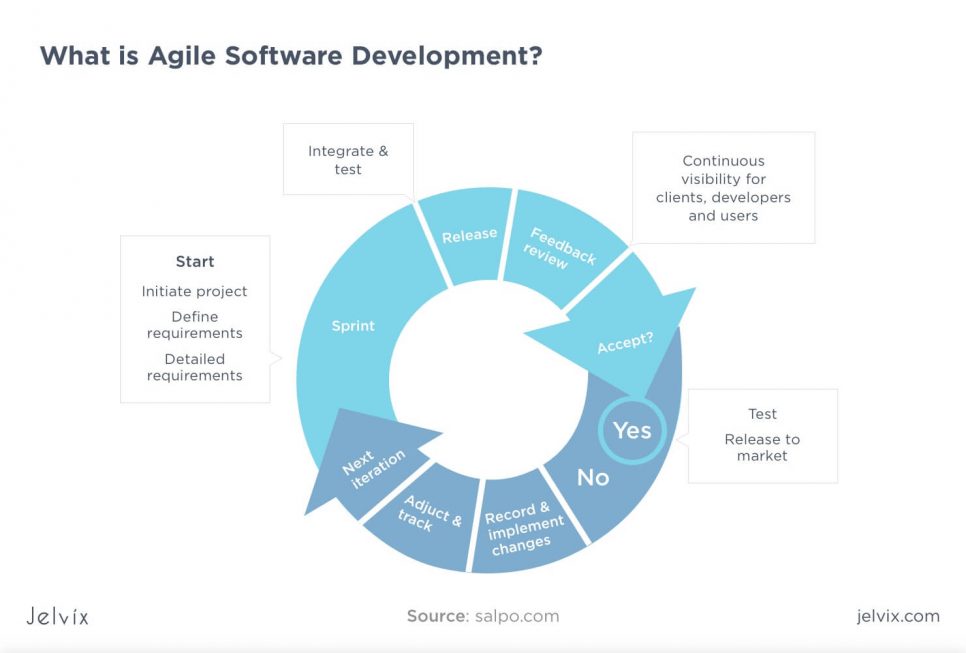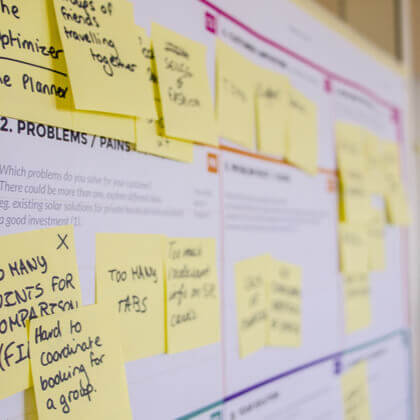A notable percentage of companies are now using Agile Project Management as their approach to meeting market demands. According to new research, 55% of companies that stay on budget and complete over 80% of their projects on time use Agile Project Management frameworks.
Agile Projects might be more successful than traditional project management methodologies by only 28%, but the latter is increasingly less effective in responding to a customer’s changing needs. This is because of the unique features of traditional project management methodologies:
- They are run in a series of fixed sequential steps: initiation, planning, execution, monitoring, and closure.
- They put emphasis on linear processes, documentation, upfront planning, and prioritization.
On the other hand, is Agile project management, whose definition is reiterated by the phrase as agile as a monkey. When you say that someone or something is as agile as a monkey, it means that they are very quick and have the ability to move fast and easy. Agile Project Management and Agile Software Development take their basic qualities from this.
Agile Software Development, often referred to mononymously as Agile, is all about incrementally delivering quality software to businesses and companies. This nature of an ongoing delivery process stems from the need for businesses to adjust to changing requirements and to stay competent in the market. As a result, success in Agile Software Development is measured by the team’s ability to continually deliver.
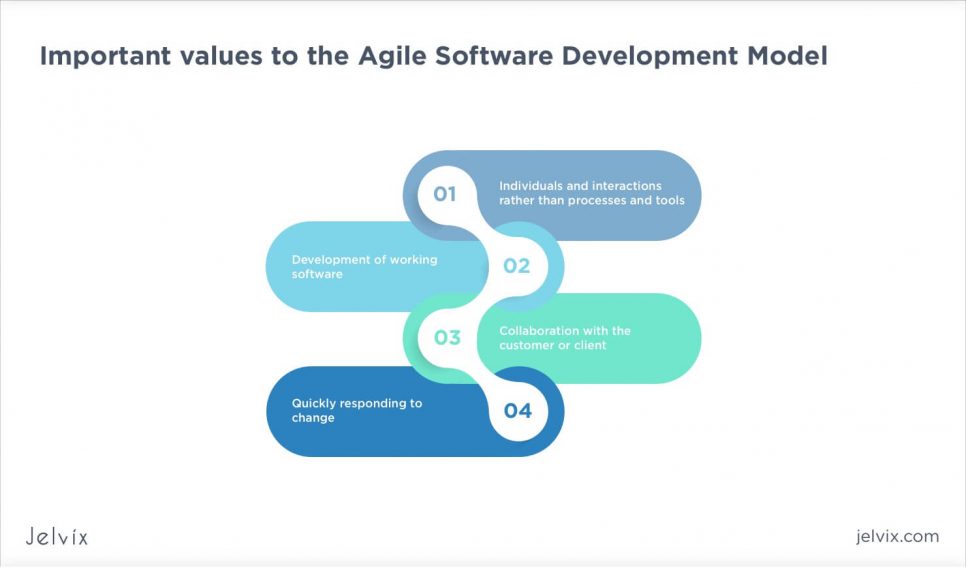 The underlying reasoning behind Agile Software Development is that different projects need different lines of action. With this in mind, Agile projects are based on certain values. One such value is the focus on skills, communication, and community to allow for agility and efficiency as opposed to focusing on processes.
The underlying reasoning behind Agile Software Development is that different projects need different lines of action. With this in mind, Agile projects are based on certain values. One such value is the focus on skills, communication, and community to allow for agility and efficiency as opposed to focusing on processes.
Other Agile values include:
- Prioritizing working software over comprehensive documentation
- Prioritizing customer collaboration over contract negotiation
- Prioritizing responding to change over following a plan.
In the most basic sense, you can look at Agile as various approaches to software development that are particular on incremental delivery, team collaboration, continual planning, and continual learning. These features limit a one-time delivery at the end and make room for ongoing changes.
 An Agile team consists of six parties with different roles to play. However, in an agile team, everyone is focused on delivering a high-quality product. The product or project refers to the new mobile app, game, or personalised software to be developed. Members of the team include:
An Agile team consists of six parties with different roles to play. However, in an agile team, everyone is focused on delivering a high-quality product. The product or project refers to the new mobile app, game, or personalised software to be developed. Members of the team include:
- Customer: Helps define the product/project also known as the product owner
- Programmer: Helps to the product/project
- Tester: Helps verify the product/project works as defined
- Tracker: Helps gather and present useful metrics
- Coach: Helps guide the team to success
- Coordinator (optional): Helps manage external communication.
The customers play a special role because they take responsibility for the product’s functionality and user-facing design. There are also business analysts, product owners, testers, and others who help define the product and advise the customer.
Developers, architects, and technical support are in charge of the internal design, development, and maintenance of the product. A coach guides your team, helping to devise their own rules and protocols. The professional coach help teams grow to the point where they no longer need him.
Team coordinators are replaced by the roles of a manager, project manager, and Scrum Master. They arrange schedules, handle incoming requests, and resolve interpersonal issues.
A variety of Agile frameworks exist. They are also referred to as methodologies or approaches. They include Scrum, Kanban, Extreme Programming (XP), Crystal, Lean, Feature Driven Development (FDD), and Dynamic Systems Development Method (DSDM). Choosing the right one for a specific project can confuse even experienced development teams. The key to subsiding this confusion is understanding the differences between them.
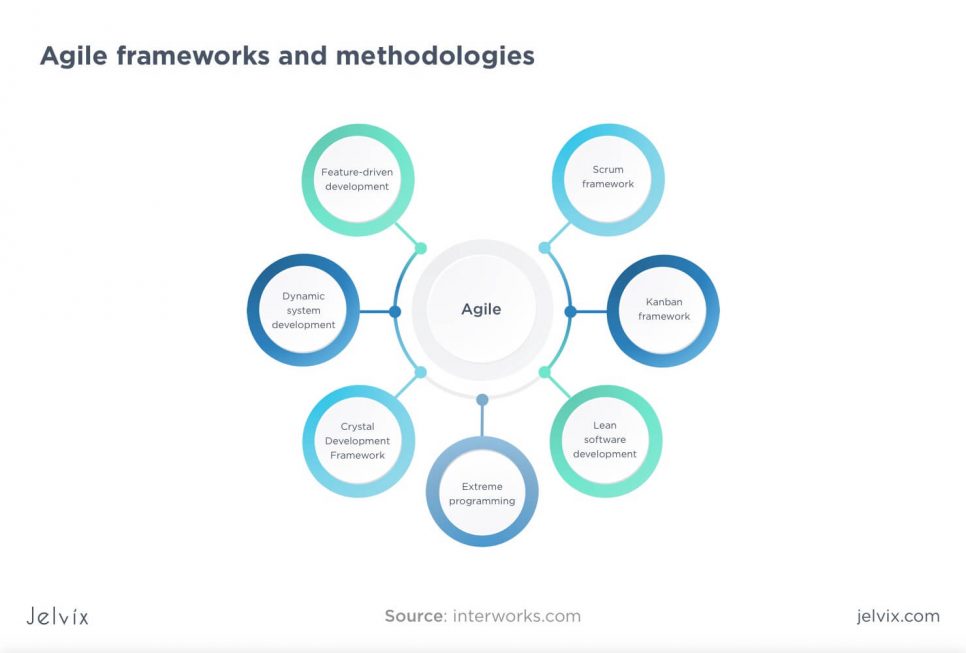 The two Agile methodologies discussed in this article will be Scrum and Extreme Programming (XP). It is crucial to have knowledge of these methodologies for the success of your project. Both of these Agile frameworks build on top of certain principles and provide clear guidelines for product/software development. Remember, Agile itself is just a list of values and describes a wide variety of practices that conform to those values.
The two Agile methodologies discussed in this article will be Scrum and Extreme Programming (XP). It is crucial to have knowledge of these methodologies for the success of your project. Both of these Agile frameworks build on top of certain principles and provide clear guidelines for product/software development. Remember, Agile itself is just a list of values and describes a wide variety of practices that conform to those values.
What is the Scrum methodology, and how does it work?
Scrum is an effective framework for organizing work. It has a simple and circular process with two constant elements of inspection and adaptation. The first is creating and maintaining ruthlessly ordered to-do lists known as product backlogs. The second element refers to prioritizing items dedicated to different steps in the project development in short time periods. These are called sprints, and within this time period, the scrum team strives for predetermined and mutually agreed upon goals.
 A Scrum Team consists of a Product Owner, Scrum Master, and Development team who work together and deliver according to the simplicity of the framework through a high level of communication among one another. The role of the Product Owner is to translate the customer’s goals back to the Scrum team. They are the team members that know what the customer wants and the relative business value of those wants.
A Scrum Team consists of a Product Owner, Scrum Master, and Development team who work together and deliver according to the simplicity of the framework through a high level of communication among one another. The role of the Product Owner is to translate the customer’s goals back to the Scrum team. They are the team members that know what the customer wants and the relative business value of those wants.
A Scrum Master is the facilitator for an agile development team. Although the role was created as part of the Scrum framework, the term is also used by teams not explicitly following Scrum. The responsibilities of the Scrum Master include addressing team dynamics, clearing obstacles, and ensuring good working relationships within the team.
Scrum project management mainly relies on a cross-functional and self-organized team and is often described in terms of the desirable outcome. Scrum allows you to adapt to ever-changing market requirements, technological constraints, and innovations. The key lies in the ongoing process of working on the top-priority issues to completion.
The team works on the development and testing of every high-priority item through seven steps:
- requirements formulation
- UI/UX design
- development
- full testing
- integration
- documentation
- final approval.
Every requirement considered during a sprint should be fully built out, tested, and then approved or rejected.
 Projects are tangibly built, increment by increment. These tangible increments are then showcased to stakeholders for feedback. The new requirements generated by their feedback are placed in the product backlog and prioritized according to existing tasks. This is called the scrum cycle.
Projects are tangibly built, increment by increment. These tangible increments are then showcased to stakeholders for feedback. The new requirements generated by their feedback are placed in the product backlog and prioritized according to existing tasks. This is called the scrum cycle.
Therefore, the scrum cycle is run again and again. The constant flow of feedback and focus on the items of the highest priority reflect customer satisfaction and fast top-quality delivery. Scrum can be used on any complex project. It specifically benefits the projects:
- with cross-functional teams;
- without constant interruptions from everyday business activities;
- that require a quick feedback loop;
- that use stakeholders feedback to prioritise tasks for the next sprint.
Scrum events provide the opportunity of adhering to the Agile value of prioritizing ongoing communication. This includes Sprint, Sprint Planning, Daily Scrum, and Sprint Review.
The Development Team is responsible for conducting the Daily Scrum, which is a short, daily internal meeting kept within a 15-minute time-box. The Scrum Master makes sure that the meeting is not disrupted and that each team member working towards the completion of a given sprint participates.
Sprint Planning is used to plan the work that needs to be performed during the sprint. The meeting is divided into two parts. The first part determines the goals of the sprint, while the second part determines how the goal will be achieved.
A Sprint Review is done at the end of the sprint and is used to assess the achievements during the sprint. It is also used to decide on what should be done in the next sprint based on the communication between the product owner and the development team. The team meets to address what the highlights of the sprint were and what problems were found.
What is the XP methodology, and how does it work?
Extreme Programming (XP) is a lightweight, efficient, low-risk, flexible, predictable, and scientific way to develop software. It derives its name from taking elements of traditional software engineering practices to “extreme” levels. XP is an Agile methodology with certain features. It is designed to work with projects that aren’t sharply constrained by the existing computing environment, and where a reasonable job of executing tests can be done in a fraction of a day.
XP works best for small to midsize teams developing software working in the midst of vague or fast changing requirements. During the development process, the team builds a full version of the system approximately every 6-8 weeks. XP uses expeditious feedback and effective communication to get the most of the delivered value via:
- specific planning approach
- on-site customer
- continuous testing.
None of the ideas in Extreme Programming are new. Most of them are as old as programming itself. It is intended to improve software responsiveness and quality as requirements change. It further promises to reduce project risk, improve responsiveness to business changes, improve productivity throughout the life of a system, and add fun to building software in teams—all at the same time.
An XP approach emphasizes customer involvement and testing. The customer in XP has frequent opportunities to change the XP development team’s direction if circumstances change. You can think of XP as an onion. The innermost layer is programming. The middle layer consists of a set of team-oriented practices. The outer layer defines the process by which a programming team interacts with its customers.
Extreme Programming takes traditional principles to extreme levels through a number of practices. The major areas of practice in XP are divided into three layers: programming practices, team practices, and processes. Where a practice is weak, the strengths of other practices will cover for the weakness.
- simple design
- pair programming
- constant testing
- ongoing integration
- refactoring
- coding standards
- small releases.
The exhausting but productive practice by which XP reviews code all the time is known as Pair Programming. Pair programming is the practice of having two people simultaneously working together on all production code as full partners to provide constant design and code review. In XP, the pairs typically change a couple of times a day and program with one keyboard, one mouse, and one monitor.
Continuous integration is the practice of integrating the system several times per day every time a task is completed by a developer (pair). It reduces development disputes and establishes a natural end to a development episode. Integration in XP is supported by tests like unit testing and functional testing.
Unit testing is done continually by all programmers for development to continue. The unit tests verify the basic functionality of a program, act as a constant safety net, and support in designing, coding, and refactoring. On the other hand, functional testing (also referred to as acceptance testing) is done by customers to demonstrate that features are finished. Functional tests also determine the overall behavior of the system.
Continuous integration is possible in XP because it is supported by tests, and because XP provides for simpler design via refactoring. Refactoring in XP is the practice of restructuring a program or implementing a feature without changing the behavior of the system. This is done to simplify, remove duplication, improve communication, or add flexibility.
XP projects have three phases, namely the release planning phase, iteration phase, and the release phase. Customers describe their needs as briefly stated stories. In the release planning phase, the customer writes stories, the programmers estimate them, and the customer chooses the order in which stories will be developed.
 In the iteration phase, the customer writes tests and answers questions, while the programmers develop software according to the stories. The iteration phase provides ready-to-go software. Thirdly, in the release phase, the programmers install the software, and the customer approves the result.
In the iteration phase, the customer writes tests and answers questions, while the programmers develop software according to the stories. The iteration phase provides ready-to-go software. Thirdly, in the release phase, the programmers install the software, and the customer approves the result.
Extreme Programming succeeds in cases where the functionality of the system is expected to change every few months. It is also used in a situation where the customer requires a new system by a specific date, which brings in a high risk. As XP is used for high-risk projects and projects with specific delivery times, it requires small teams with a maximum of just over 30 people.
What do XP and Scrum have in common?
Both Scrum and Extreme Programming divide the development process into sprints, have a planning meeting before the development starts, and pinpoint user stories during such meetings. Businesses describe their needs as briefly stated stories, which are informal expressions. The story is said to be heard once their need (represented by the story) has been built in code.
They also both imply having a planning meeting before each sprint as well. Their primary goals are likewise similar. Both Scrum and XP focus on delivering a high-quality product to the customer as fast as possible.
Learn more about the fundamental differences between Waterfall and Agile.
What is the difference between Scrum and XP?
One of the standard questions asked related to Agile is how extreme programming compares with Scrum, as both of them are the most important methodologies of Agile. Understanding their differences helps in choosing the right framework for a specific project.
Scrum vs XP differ in six prominent areas: in their main focus, sprints, in how they accommodate changes, in the role of the product owner, in how they prioritize tasks, and lastly, in their values. Let’s take a closer look:
Main focus
The main difference between Scrum and Extreme Programming is their main focus. Scrum is heavily focused on management itself. It deals with the activity done besides coding as it does not give much technical and engineering emphasis on how work is actually done or how a product is actually built.
Scrum determines how to plan and analyze results, as well as how to increase productivity. It is more concerned with productivity and how productive the shippable product is at the end of the sprint. Scrum also has well-defined team roles, organized ceremonies, and informational artifacts.
On the other hand, Extreme Programming concentrates on the test-driven approach. Its principles are the best engineering practices taken to the extreme. XP comes with core practices that focus on providing quality of software delivered with technical emphasis programming and coding.
Extreme Programming focuses on engineering and feedback techniques such as pair programming and testable development. With pair programming, developers simultaneously code and do the other checks. This ensures the quality of code and saves time. Shared understanding is prevalent in the team with respect to determining coding standards and as well as collective code ownership.
XP is often said to equal pair programming; however, it is not completely true. While XP does include this practice, it consists of 11 more practices, including writing unit tests first, continuous integration, and so on. It is important to note that projects deciding to use the XP framework must make sure all 12 guidelines are followed. Omitting any one of them may make the whole process inefficient.
Sprints
One of the important principles of Agile is to provide shippable increments at small time periods called sprints. Both frameworks use sprints as development stages and have to present the customer with a working system at the end of each sprint. They each have different approaches towards these time box iterations.
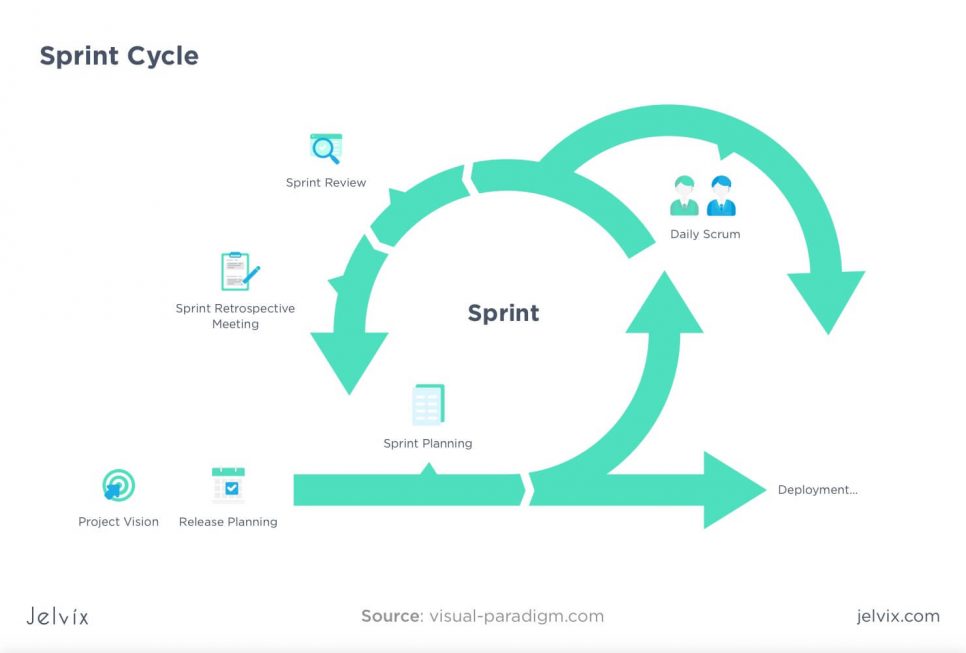 Scrum sprints last for two to four weeks, and their length is quite flexible. Under XP, however, there are shorter iterations of one (sometimes two) weeks to develop a working system. The weeks in question should be 40-hour work weeks to make sure developers don’t get exhausted.
Scrum sprints last for two to four weeks, and their length is quite flexible. Under XP, however, there are shorter iterations of one (sometimes two) weeks to develop a working system. The weeks in question should be 40-hour work weeks to make sure developers don’t get exhausted.
The aim of an XP sprint is not focused on product release but on creating a working bug-free system. In turn, Scrum sprints are supposed to result in a working product.
Accommodating changes
In Scrum, once the features that are to be implemented for the current sprint are decided, no new changes are allowed to be included in the sprint while it is in progress. Once the planning of the sprint is done, it is impossible to introduce changes during the sprint. The customer, therefore, has to wait until its end to do this.
There is more flexibility in extreme programming in this regard. Under XP, developers don’t make a new feature until it is needed. Changes can be made by the customer during the sprint itself – and they are encouraged to be made in the early stages of development. There are provisions for new items to be brought in. There are also provisions for the replacement of existing items in the current sprint that are not started yet.
Product owner
If an enterprise uses Scrum, all the communication with the product owner during the development itself is done by the scrum master. The main part of it concerns prioritizing user stories for each sprint and making sure they are totally clear for developers.
In the case where an enterprise uses XP, the customer is the one who communicates with the team of developers. He or she prioritizes the user stories as well, asks to make changes, and gives feedback on the results of the sprints. In addition, the customer always has to be available for communication.
Prioritizing tasks
In a Scrum project, the product owner determines the priority of the development tasks within a sprint while developers determine the order of their actions themselves. They can pick the tasks in the sprint and do them in any order as long as they complete the task by the end of the sprint.
On the other hand, there is no such flexibility for XP projects. XP teams follow strict orders according to priority and requirement. The customer decides on the order of tasks, and the team has to follow it without any deviation.
Values
The two frameworks, Scrum vs XP, have some differences in values. Keep in mind that any Agile methodology is more than just rules. It is a philosophy that determines the approach to development.
Although they have the values of courage and respect in common, the others are different. Scrum values include openness, focus, and commitment, whereas XP cherishes communication, simplicity, and feedback.
Conclusion
A new project is devised and needs to be developed. Important questions to ask are what happens when there is a complaint, and something needs to be tweaked? How do you respond on time? How can you go about delivering software that fits you or your customer’s ever-changing needs?
The Agile Software Development framework answers these as it incrementally delivers quality software to businesses and companies, which allows for regular responses to changing requirements in order to compete in the marketplace. The two frameworks discussed, Scrum and XP, both focus on delivering a high-quality product to the customer as fast as possible.
There is no universally best framework suitable for all cases – each of them has its pros, cons, and use cases. If you don’t know how to settle on just one framework, what you can do is combine Scrum and XP. Many companies already profit from using hybrid methodologies and integrate XP techniques into the Scrum/Kanban/Lean workflows, and you can be one of them. If you don’t know from where to start, contact us, and we will help you implement your idea into life.
Need a qualified team?
Unlock new business opportunities with the first-rate dedicated development team.


